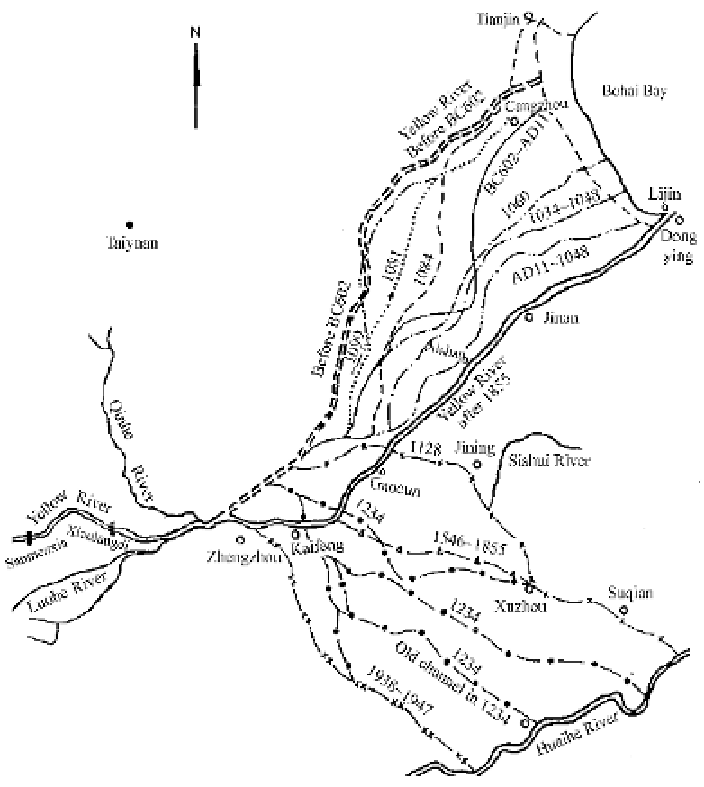Environmental Engineering Reference
In-Depth Information
Fig. 6.4
Migration of the Yellow River and the abandoned channels
1761
—Ten days of rainfall from August 9 to 18 resulted in 10 billion m
3
of runoff and caused a rare
flood with a crest discharge of 32,000 m
3
/s in the section from Xiaolangdi to Huayuankou. Twenty-six
counties in Henan, Shandong and Anhui Provinces were flooded.
1843
—A rainstorm occurred in the middle reaches of the Yellow River on August 6-8 and generated
the biggest flood in recorded history (1000 yr reoccurrence). The crest discharge in the reach from
Shanxian to Sanmenxia was up to 36,000 m
3
/s and the total runoff in 12 days was over 11.9 billion m
3
.
The flood stage in the reach from Tongguan to Xiaolangdi (Fig. 6.1) was the highest in 1000 years of
history. Twenty-seven counties and 15,000 villages were flooded and thousands of people were killed.
1855
—From 1796 to 1855 the Grand Levees were breached 22 times and the major task for the river
training was to close the breaches in this period. A flood from the upstream magnified by a heavy rainfall
in the lower reaches breached the grand levee at Tongwaxiang on June 18, 1855. The river poured out and
inundated 8 counties, and finally took over pirated the Daqing River Channel. Consequently, the Yellow
River shifted its major course from south to north and flowed into the Bohai Sea. Thousands of people
were killed by the flood and several million people lost their homes shelters and farmland.
1933
—In 1933 the river swelled again by heavy rainfall during August 5-10. The 4 days of precipitation
in the Qingjian River (a tributary of the Yellow River) watershed reached 255 mm. The crest discharge
was recorded at 22,000 m
3
/s at Shanxian Station. The flood caused 54 levee breaches, inundated 67


Search WWH ::

Custom Search